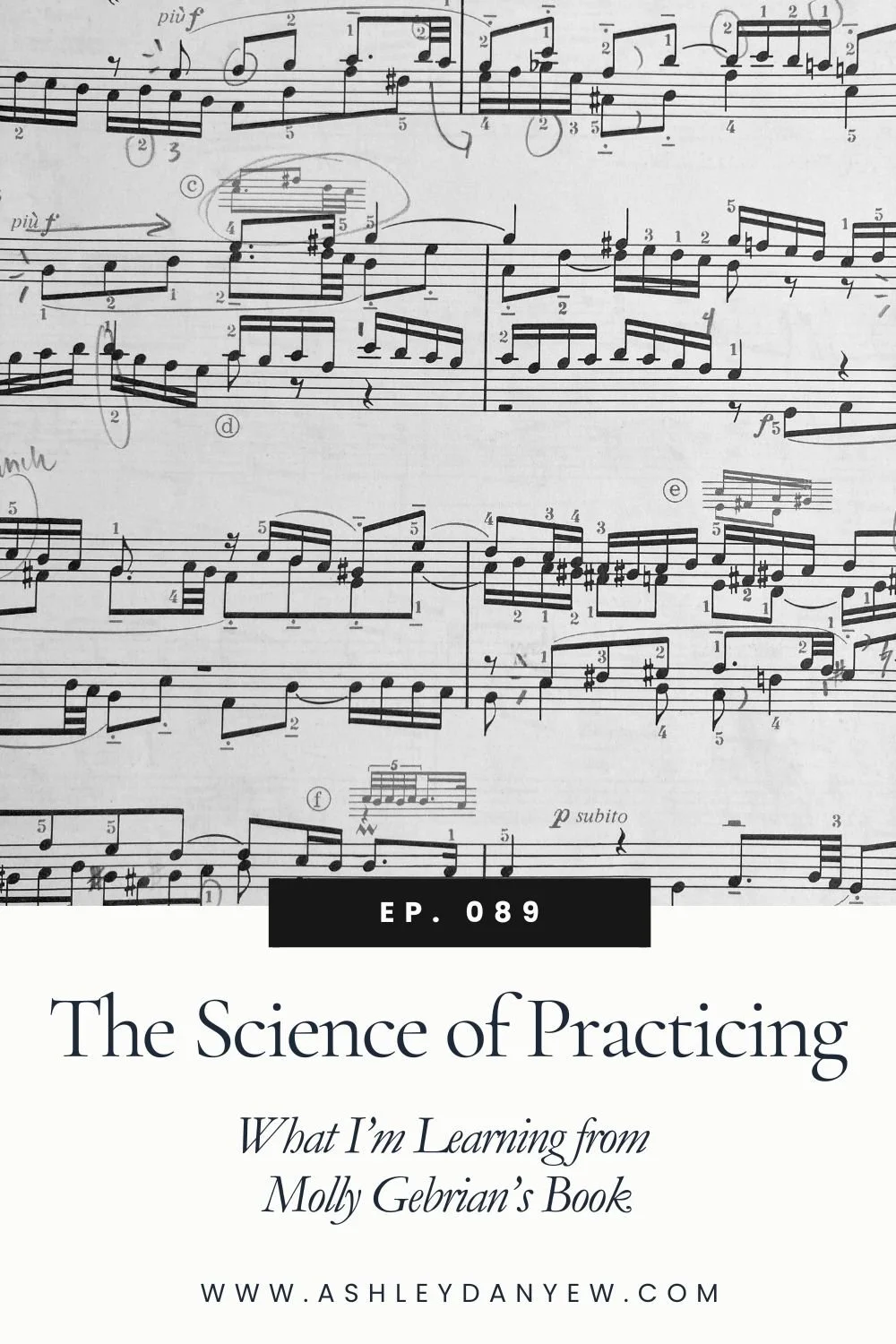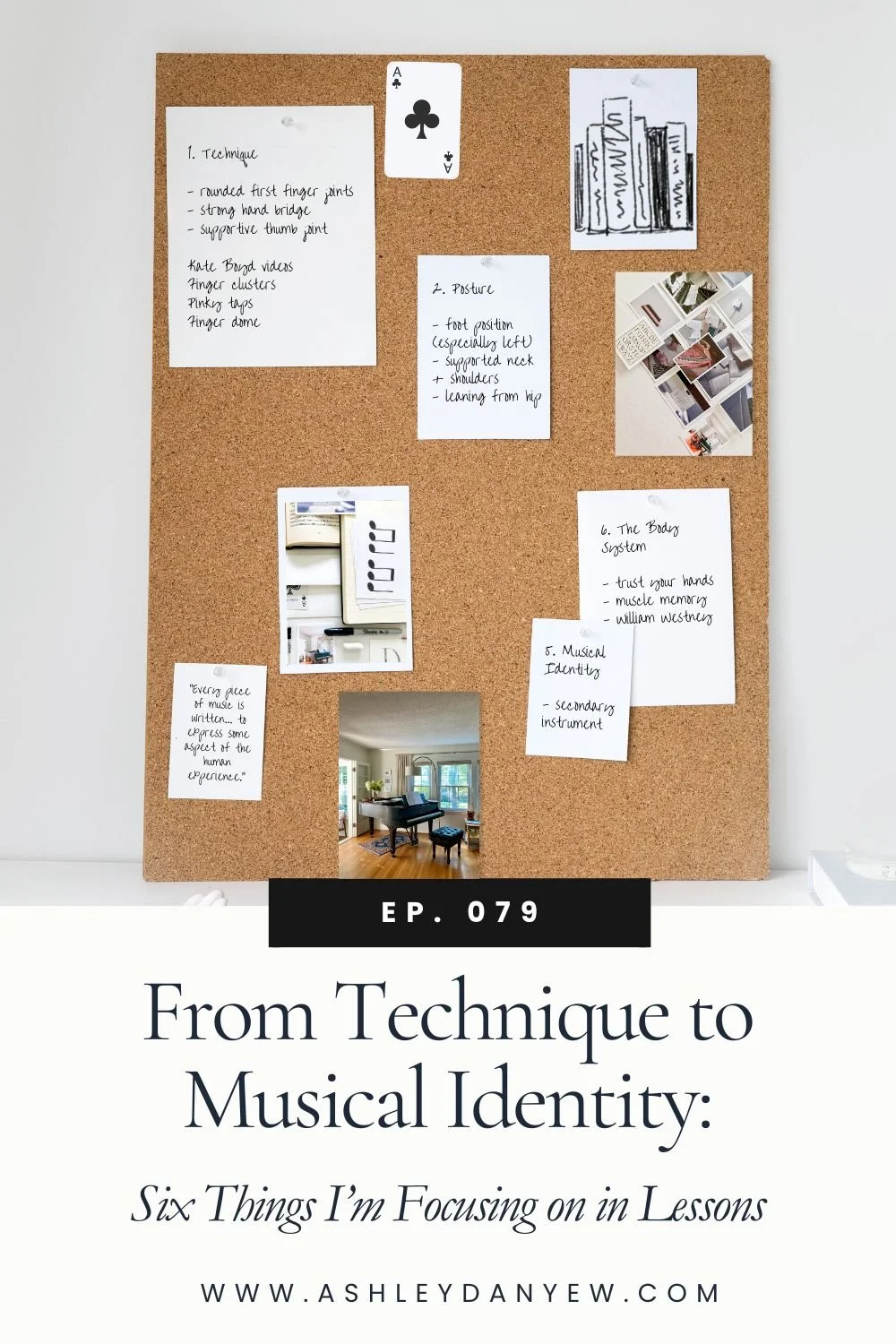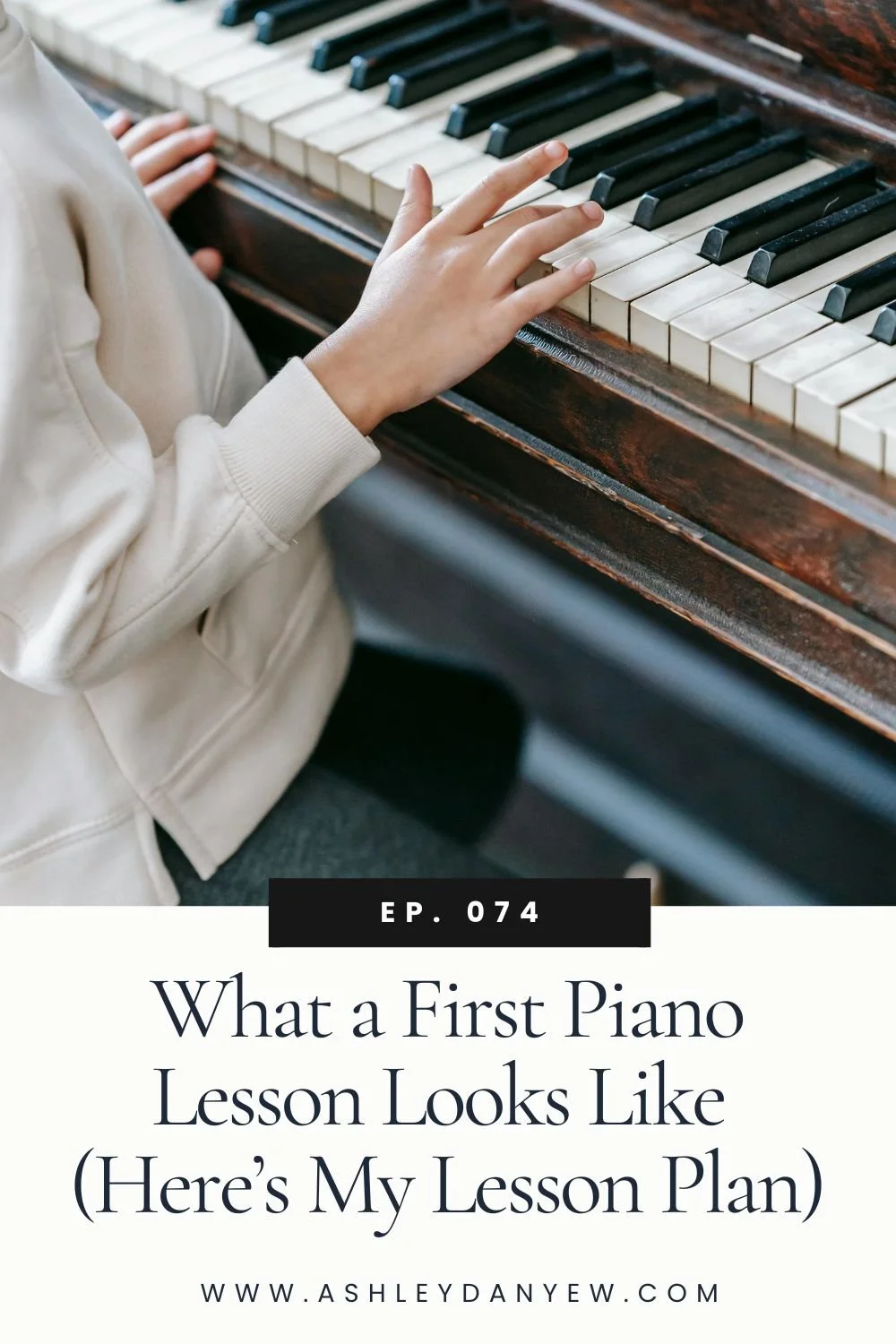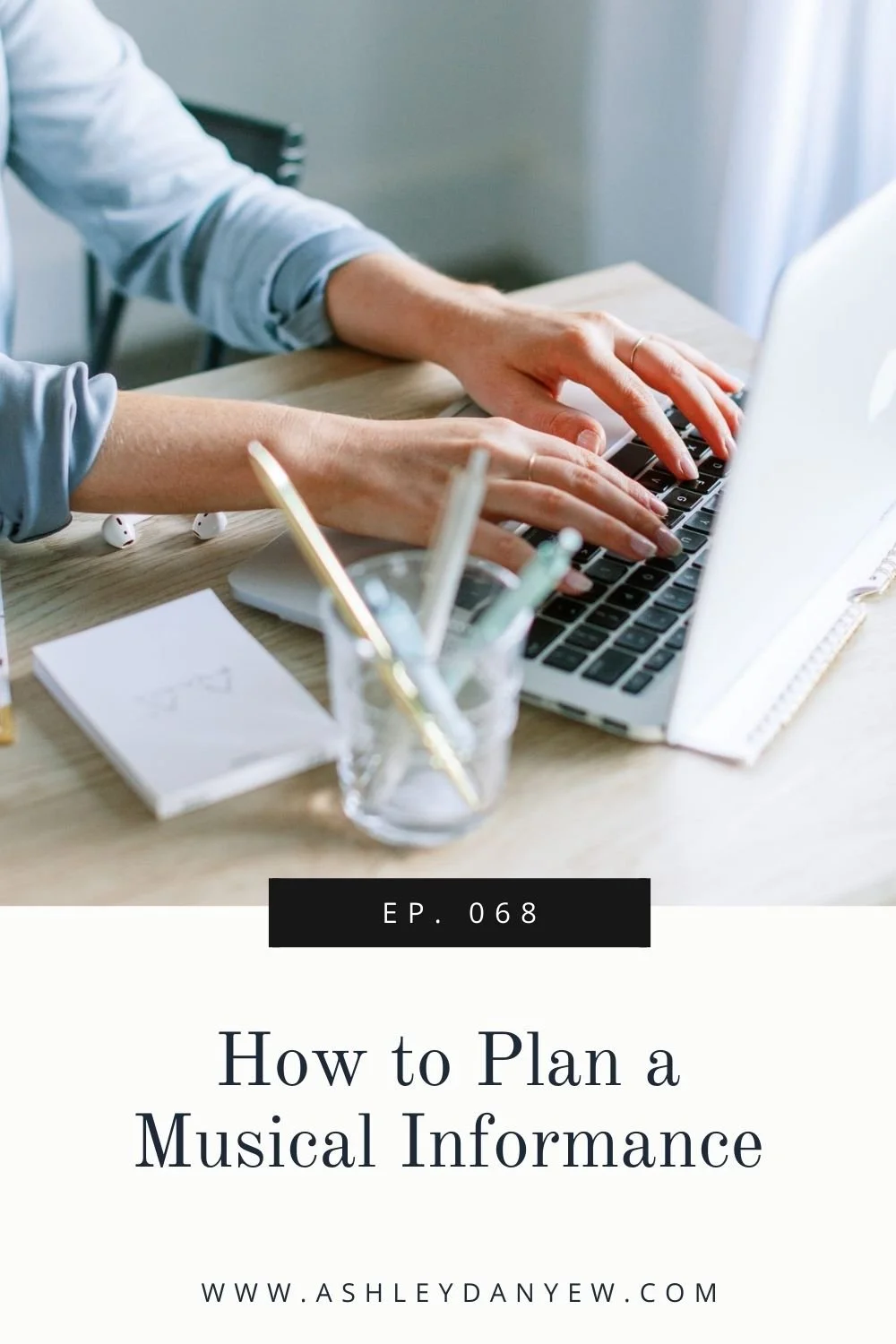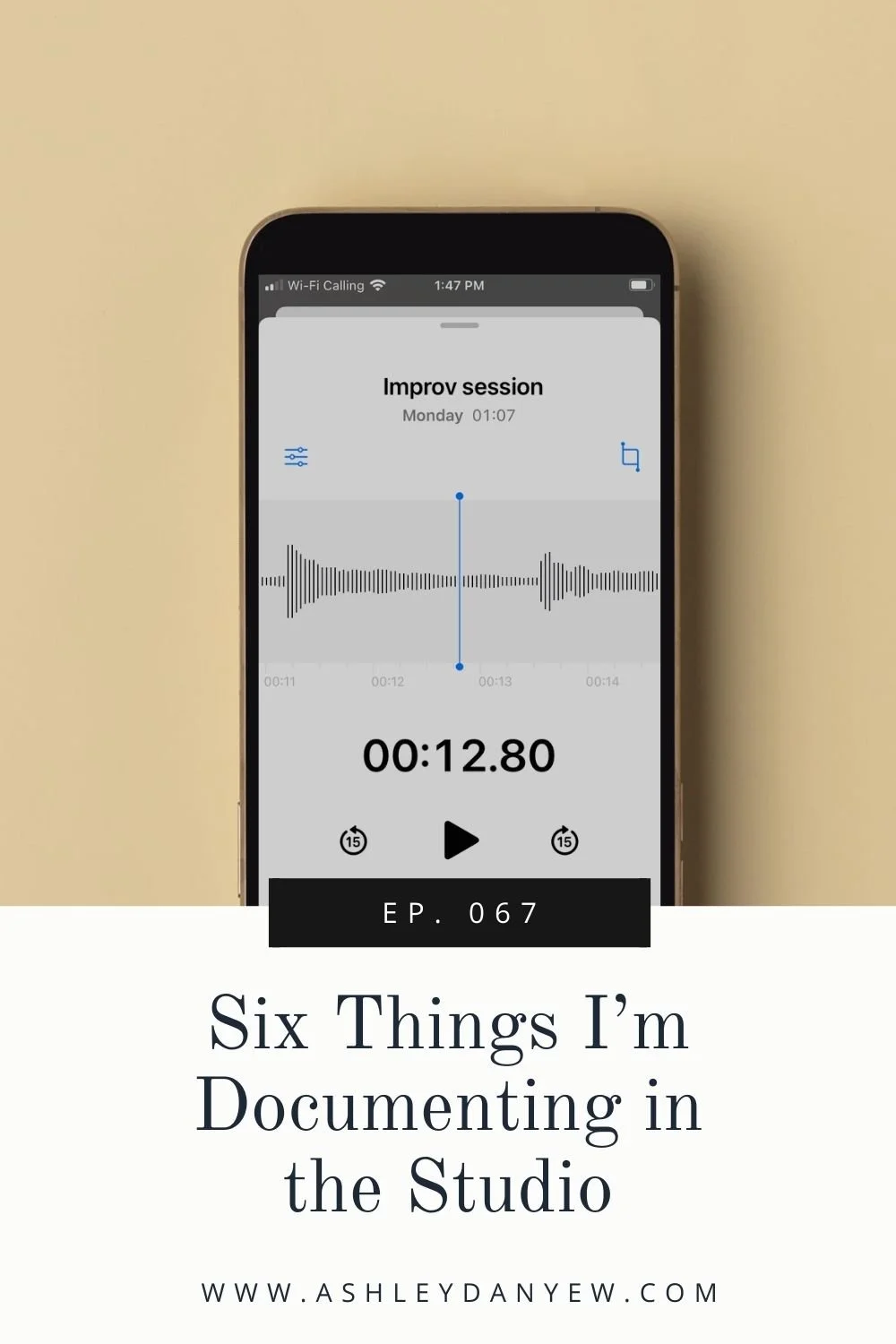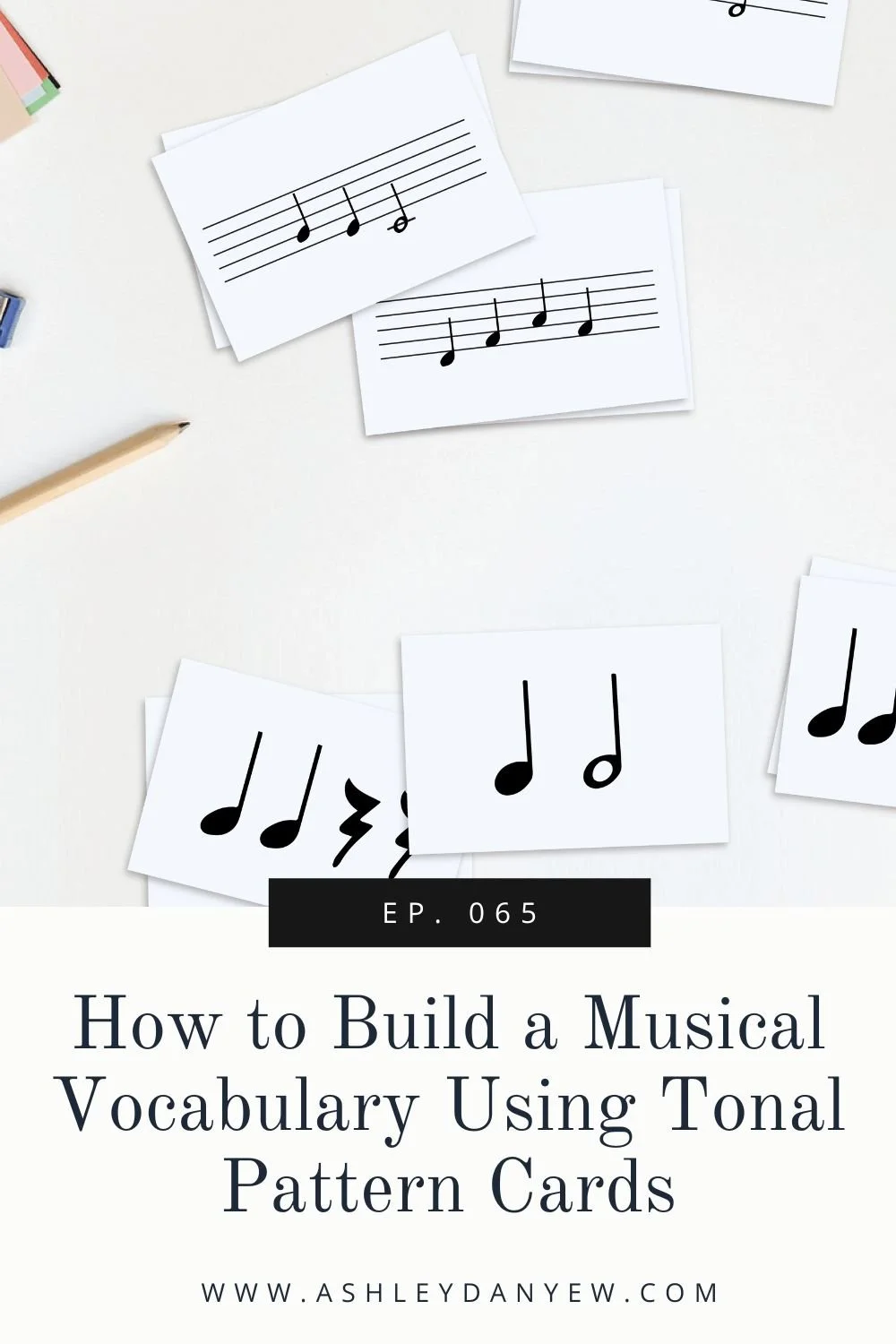Resources Mentioned
*Disclosure: I get commissions for purchases made through links in this post.
Rhythm Keeper (Musikal Husky)
An Interview with Samantha Steitz of Musikal Husky (Musician & Co.)
Ep. 008 - 10 Creative Ways to Use Rhythm Pattern Cards in Your Teaching
Sight-Reading and Rhythm Every Day (Helen Marlais)
We've been working a lot on rhythm in the studio this spring.
I've always made an effort to incorporate a rhythm activity into each lesson, but I've found myself being more intentional about this in recent months and becoming more aware of how I teach rhythm and how students develop these skills.
From the Music Learning Theory, we know that students develop audiation skills, or the ability to hear music in their head without any sound being present, through singing, rhythmic movement, and building a vocabulary of tonal and rhythm patterns.
I tell my students that the rhythm of a piece is like the architecture of a house or building: It's the framework that supports everything else.
There are three elements of rhythm: The macrobeat or big beat, the microbeat or little beat, and melodic rhythm, which is a sequenced series of rhythm patterns in a song or piece.
If you, like me, are stepping back to evaluate how you teach rhythm and what your students know and understand, here are a few questions to consider:
Do your students have a sense of the macrobeat in a given piece?
Do they feel the underlying subdivision, the microbeat?
Do they have an awareness of both of these things in the context of melodic rhythm?
In this episode, I'll share seven ways I'm practicing rhythm in the studio with students from 1st through 12th grade, including several teaching strategies, games, and challenges for those who need something a little more difficult.
7 Ways to Practice Rhythm in Private Lessons
No. 1 - Rhythm Keeper
In January, I purchased a copy of Rhythm Keeper, Vol. I for the studio. I follow the author, Samantha Steitz on Instagram, and just interviewed her for the Musician & Co. blog last month. I'd heard her talk about this rhythm curriculum and seen other teachers talk about it, as well, so I was eager to get my own copy.
First, the book is lovely. It's printed using eco-friendly and non-toxic materials, thick and creamy white paper, a soft cover, and lay-flat binding, which is so nice.
The content is simple: page after page of carefully sequenced rhythm exercises progressing from quarter notes and half notes to rest patterns, dotted half notes, whole notes, eighth notes, sixteenth notes, and triplets in duple, triple, and compound meters. The book includes hundreds of progressive exercises designed for students of all ages and instruments. It's flexible enough to be used as a curriculum supplement in private lessons, ensemble rehearsals, or general music classrooms.
One thing that differentiates Rhythm Keeper from other rhythm methods is the unique approach to counting the subdivision all the way through the exercise (not just within the measure).
When I first introduced this to my students, we discovered that this helped students maintain a steady beat and not rush the longer note values.
I have introduced this curriculum to all of my students now, even the ones who are in their first year of study. I don't usually switch to numerical counting until late elementary, so for some of my first- and second-year students, we look for animal rhythm patterns they know from the Piano Safari curriculum or use du and du-de to clap and count the example.
I often give them a choice between examples 3 and 4 or 5 and 6. With my older students, I'll give them a choice and then I'll clap or tap the other example with them as a duet. We also practice in fast and slow tempi for an extra challenge.
No. 2 - State Rhythms
This is an activity I do with first-year students to prepare for dotted rhythms. I usually start this activity a few weeks before we begin "Ode to Joy" because I always teach it with the dotted rhythm at the end, even if that's not how it's notated in the method book.
The idea for state rhythms comes from Craig Sale—a teaching tip he shared in Questions & Answers on the Piano Inspires website. He begins by clapping and chanting the name of a state in a straight rhythm and having the student clap and echo back.
I usually do several 3- and 4-syllable state names like this:
California
Maryland
Mississippi
Oklahoma
Florida
Colorado
The next week, he reviews a few of these with straight rhythms, then claps and chants them with dotted rhythms, and has the student echo.
In the third week, he claps and chants a state name with a straight rhythm and asks the student to respond with the dotted rhythm.
I pick up some of my beginning students from their classrooms at the end of the school day, so I've found this to be a fun activity to do as we walk to our lesson.
And when we begin work on "Ode to Joy," they know exactly how to play the dotted rhythm. It's intuitive and familiar to them.
No. 3 - Piano Safari Sight-Reading Cards
I use the Piano Safari Sight-Reading cards with my 1st-4th grade students at the moment. I love that they're color-coded by unit (my students pay attention when they move to a new color) and I also like that they include 1-2 sight-playing exercises and a rhythm exercise.
Depending on the day and the student, I use a few different teaching strategies:
Sometimes, I'll ask students to identify rhythm patterns in the sight-playing exercise first. Then, we'll clap and count, point and count, or tap and count just the rhythm.
I may ask them to play the example in the air or play silently on top of the keys as they audiate the example.
Sometimes, we'll transpose or transform the example after they've played it in the given key. Sometimes, we'll try it in a different tempo.
No. 4 - Rhythm Pattern Cards
Of course, rhythm pattern cards are a staple and can be used for all kinds of games, teaching demonstrations, aural skills activities, and even improvising and composing. I shared 10 creative ways to use rhythm pattern cards back in Ep. 008.
Also, I created a set of digital rhythm pattern cards (for my own studio, really) featuring 192 different patterns made up of quarter notes, half notes, eighth notes, sixteenth notes, and quarter rests in quadruple and triple meters.
Help your students learn the language of music and develop their rhythmic-reading skills.
This printable collection of six rhythm pattern card sets features a total of 192 different patterns made up of quarter notes, half notes, eighth notes, sixteenth notes, and quarter rests in duple and triple meters (32 cards/set).
No. 5 - Sight-Reading and Rhythm Every Day
This is the sight-reading series I use with my middle and high school students. I like that it includes rhythm exercises, as well, and that the directions for each exercise vary from unit to unit. Sometimes, the student is asked to tap and count, sometimes point and count, and sometimes clap and chant the words. Sometimes, they are asked to tap it in a fast tempo, then a slow tempo on the repeat. And on occasion, students are invited to create an improvisation using the rhythm and notes of a particular scale or position.
I usually assign 1-2 days for students to work on at home and then we do one day together in the lesson.
Each unit also includes a sight-reading duet. We don't always do these, but sometimes, they're a fun addition to the lesson.
No. 6 - Practicing in Rhythms
I'm going to talk more about this in the next episode, but this is another way I'm incorporating rhythm into lessons this spring. Practicing in rhythms is a helpful way to develop steadiness and control in your playing and I find it especially helpful for scalar passages, broken chord and arpeggio patterns, and accompaniment patterns.
The basic idea is to take a given passage and play it with a long-short-long-short dotted rhythm. Then, reverse the pattern and play the passage with a short-long-short-long dotted rhythm. Then, play it once more with a straight rhythm.
We've also been preparing scales for Solo Festival; practicing scales in rhythm or pausing on the tonic note of the scale and flaring the fingers can be a helpful strategy for learning the fingering of a particular scale and developing control.
No. 7 - RCM Playbacks
You've heard me talk about the Royal Conservatory of Music Syllabi—I use the Piano Syllabus to inform my repertoire choices and assess technique and aural skills but they have syllabi for several other instruments, as well.
I’ve been doing playbacks in lessons, especially with my older students. With playbacks, a melody is played three times before playing it back. Students are asked to listen the first time, then listen again and clap back the rhythm, then listen a third time and play back the melody.
I appreciate that rhythm is the first step to preparing the playback, as some students tend to approach the notes first and save the rhythm for last.
The same is true for dictation, which we did some of earlier in the year. I played a melody and had students notate just the rhythm.
Summary:
So, there you go. Seven ways we're practicing rhythm in the studio right now. Here's that list again:
Rhythm Keeper
State rhythms
Piano Safari sight-reading cards
Rhythm pattern cards
Sight-Reading and Rhythm Every Day
Practicing in rhythms
RCM playbacks
I hope you found at least one new idea for practicing rhythm that you can integrate into your teaching in the weeks ahead.
I'd love to hear your thoughts:
What does rhythm teaching and learning look like in your teaching right now? Are you using any of these same strategies or approaches with your students?





